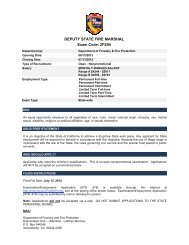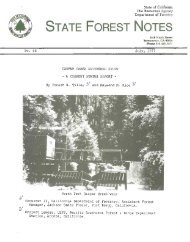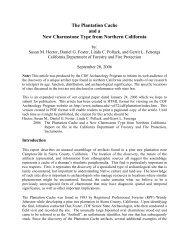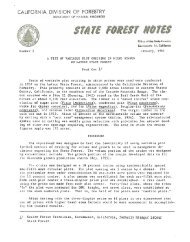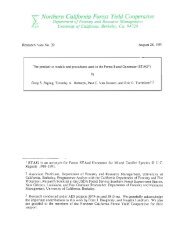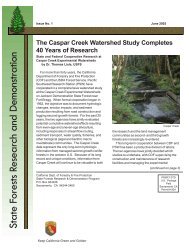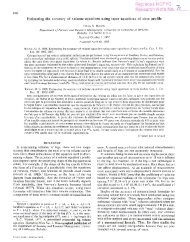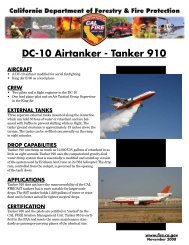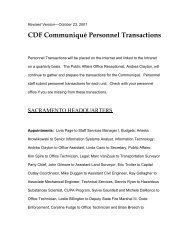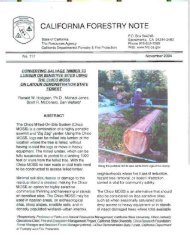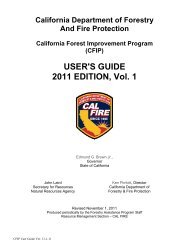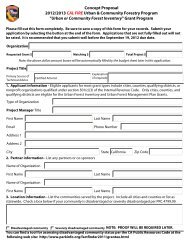You also want an ePaper? Increase the reach of your titles
YUMPU automatically turns print PDFs into web optimized ePapers that Google loves.
2005 Riverside <strong>Unit</strong> Fire Management Plan<br />
♦ Describe the wildland fire protection system in fiscal terms. This can include<br />
all public/private expenditures and potential economic losses.<br />
♦ Translate the analysis into public policy.<br />
Fire Plan Framework<br />
The five major objectives form the basis <strong>of</strong> an ongoing fire planning process to<br />
monitor and assess Riverside County’s wildland fire environment. They include:<br />
♦ Wildfire Protection Zones. These zones are buffers around the community to<br />
reduce citizen and firefighter risks from costly and damaging fires.<br />
♦ Initial Attack Success. This measure can be used to assess the department’s<br />
ability to provide an equal level <strong>of</strong> protection to lands <strong>of</strong> similar type, as<br />
required by Public Resources Code 4130. This measurement is the<br />
percentage <strong>of</strong> fires that are successfully controlled before unacceptable costs<br />
are incurred.<br />
♦ Assets Protected. The assets addressed in the plan are citizen and firefighter<br />
safety, watersheds and water, timber, wildlife and habitat (including rare and<br />
endangered species), unique areas (scenic, cultural, and historic), recreation,<br />
range, structures, and air quality.<br />
♦ Pre-fire Management. This is the process that assesses alternatives to<br />
protect assets from unacceptable risk <strong>of</strong> wildland fire damage. Project<br />
alternatives may include a combination <strong>of</strong> fuels reduction, ignition<br />
management, fire-safe engineering activities, and forest health improvement<br />
to protect public and private assets.<br />
♦ Fiscal framework. This is a tool for assessing and monitoring the costeffectiveness<br />
<strong>of</strong> the wildland fire protection systems.<br />
Pre-Fire Management Plan Applications<br />
• Identify those areas <strong>of</strong> concentrated assets and high risk for state, federal,<br />
and local <strong>of</strong>ficials and for the public<br />
• Allow wildland fire service providers to create a more efficient fire<br />
protection system focusing on meaningful solutions for identified problem<br />
areas.<br />
• Give citizens an opportunity to identify public and private assets to design<br />
and carry out projects to protect those assets.<br />
• Identify, before fires start, where cost-effective pre-fire management<br />
investments can be made to reduce taxpayer costs and citizen losses<br />
from wildfire.<br />
• Encourage an integrated intergovernmental approach to reducing costs<br />
and losses.<br />
• Enable policy makers and the public to focus on what can be done to<br />
reduce future costs and losses from wildfires.<br />
35




